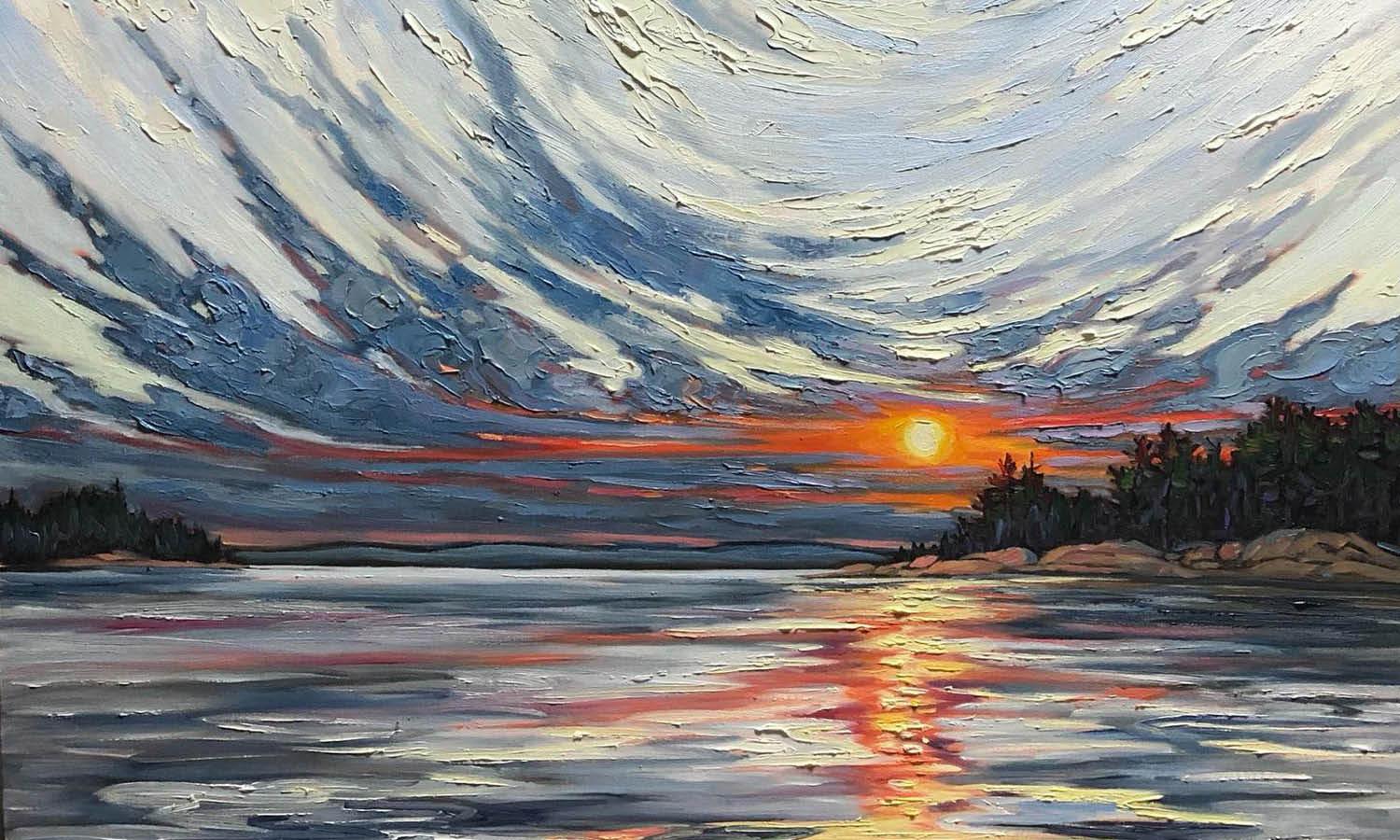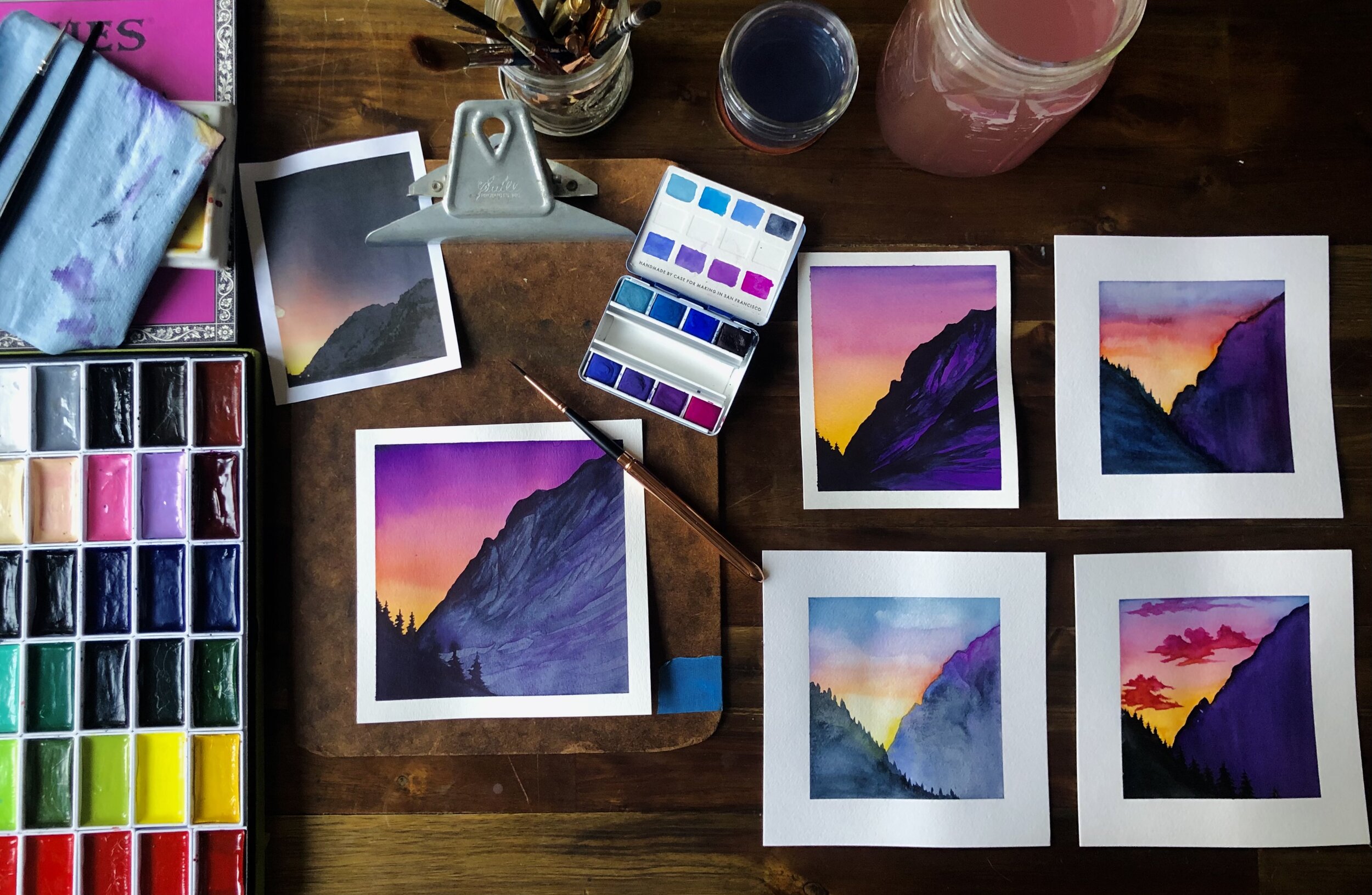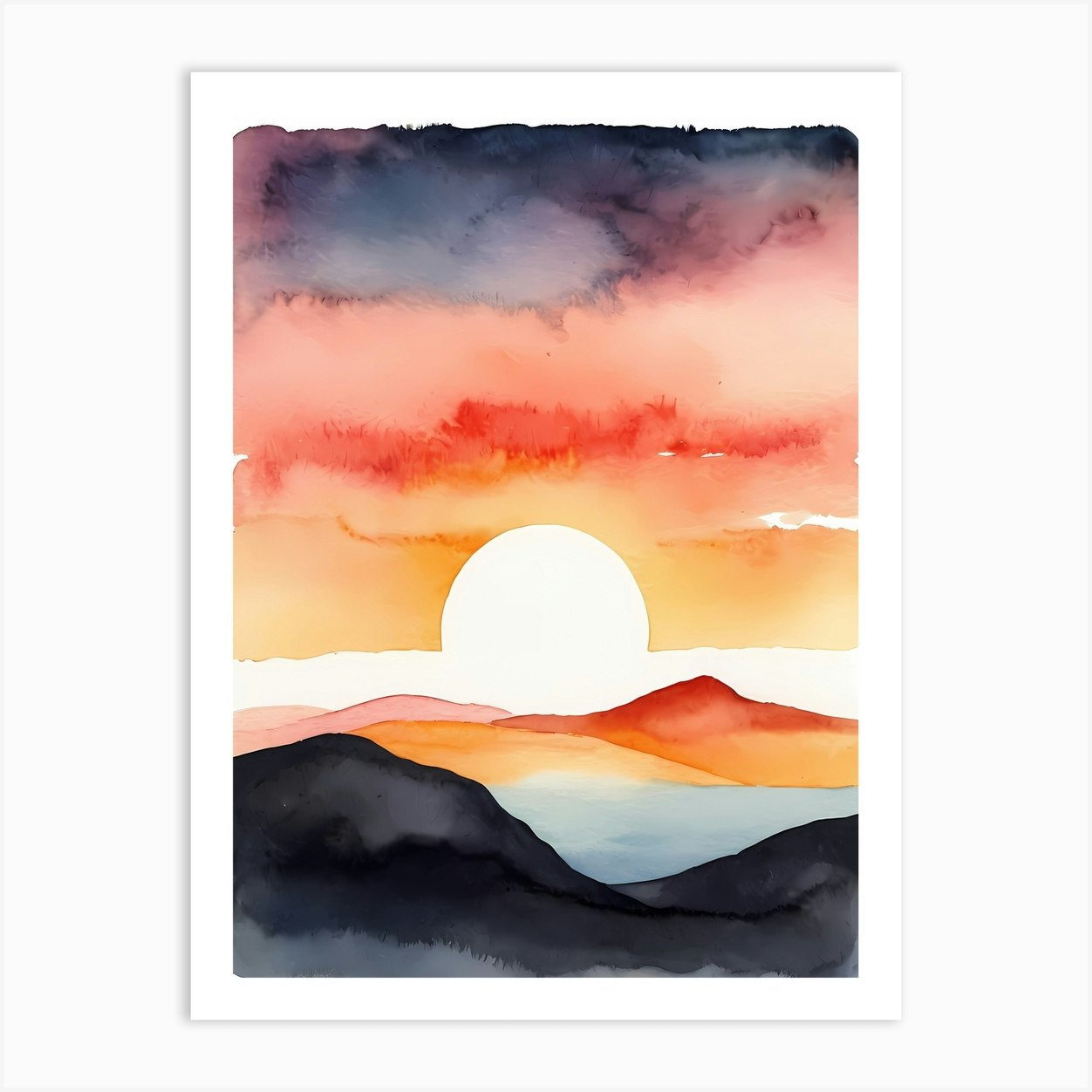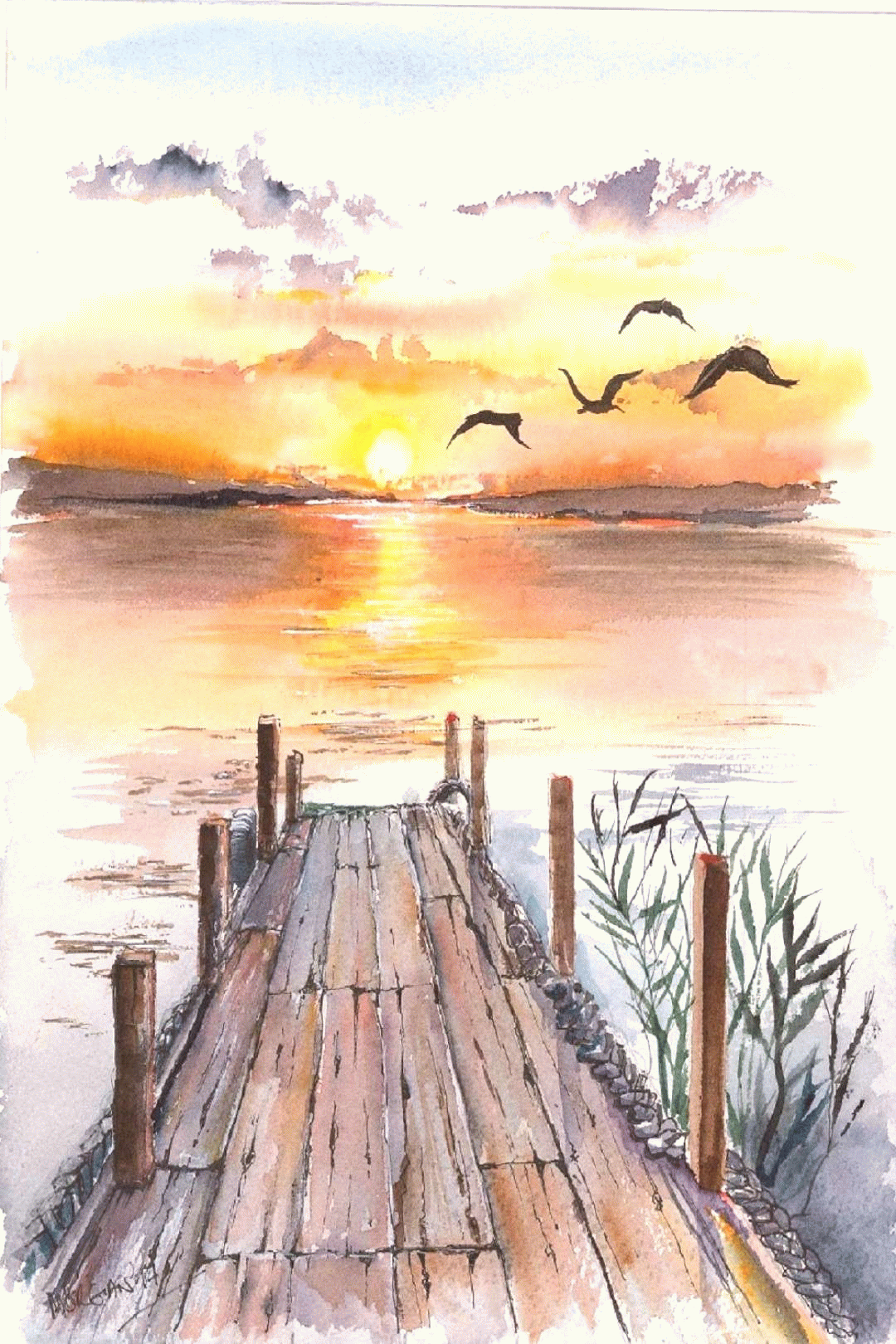Introduction: Embracing the Golden Hour
Watercolor painting, with its fluidity and ethereal nature, is the perfect medium to capture the fleeting beauty of a sunset. “Sunset Serenade” embodies the essence of those magical moments when the sky transforms into a canvas of warm hues, casting long shadows and wrapping the world in a golden embrace. This article delves into the inspiration, techniques, color palette, and compositional elements that bring a sunset scene to life on paper, guiding artists to create their own masterpieces celebrating nature’s daily symphony of colors.

The Magic of the Golden Hour
The golden hour, that brief interval before sunset when the light turns soft and luminous, is a cherished time for artists. It’s a period when the sun’s angle lowers, casting a warm, reddish-golden glow over everything it touches. Capturing this in watercolors requires an understanding of how light behaves during this time – how it diffuses, creating long, dramatic shadows and highlighting details with a gentle, almost magical touch. Observe how the light interacts with clouds, terrain, and water bodies, noting the subtle shifts in hue and value that make each sunset unique.
Choosing Your Color Palette: Warmth and Depth
A sunset’s palette is rich with warm tones: fiery oranges, deep pinks, soft purples, and golden yellows. Begin by selecting a range of pigments that can mix and layer to create these hues authentically. Key colors might include cadmium yellow, burnt sienna, alizarin crimson, ultramarine blue, and perhaps quinacridone rose for those vibrant pinks. Remember, watercolors are translucent, so layering lighter washes over darker ones can create depth and luminosity reminiscent of the sun’s last rays piercing through the sky. Start with a light underwash of yellows and oranges, gradually building up intensity with deeper reds and purples towards the horizon.

Techniques for Radiant Skies
To paint a radiant sunset sky, employ a combination of wet-on-wet and wet-on-dry techniques. Wet-on-wet involves applying paint onto a damp surface, allowing colors to blend and create soft, organic edges ideal for representing cloud formations. Start by wetting your paper, then drop in your colors, letting them mingle naturally. For more defined clouds or rays of light, wait for the initial layer to dry and apply subsequent layers with a damp brush (wet-on-dry) or a dry brush for sharper details. Don’t forget to leave areas of white paper untouched or lightly tinted to suggest the last gleams of sunlight.
Capturing Reflections: Water and Beyond
Sunsets reflected on water add another dimension to your painting. To achieve this effect, observe how light bounces off the water’s surface – it often appears more vivid and mirror-like close to the viewer, becoming fragmented and abstract further away. Use horizontal strokes following the water’s flow, blending colors softly to mimic ripples and waves. Remember, reflections are never as bright as their sources; mute your colors slightly and consider adding a touch of complementary color (like a hint of blue to orange) for a realistic touch. Don’t overlook other reflective surfaces too – wet sand, glass buildings, or even shiny leaves can all add depth to your composition.

Composition: Balancing Light and Dark
Effective composition is crucial to guide the viewer’s eye and evoke emotion. In a sunset scene, consider using the rule of thirds to place key elements off-center, creating visual interest. Use the sunset as your focal point, surrounded by darker silhouettes of trees, buildings, or mountains that contrast against the glowing sky. These dark shapes help define the brilliance of the sunset and provide a sense of depth. Remember, contrast and balance are key – don’t shy away from deep shadows; they’re just as important as the bright highlights in creating a dramatic, yet harmonious, image.
Adding Life: Silhouettes and Details
Silhouettes of people, birds, or boats can add a narrative element to your sunset scene, imbuing it with a sense of life and scale. Sketch these outlines lightly with pencil once your sky is dry, then carefully paint around them with a darker wash to maintain their crisp edges. Small details, like the glint of a setting sun on metal or the faint outline of leaves against the sky, can elevate your painting, capturing that elusive moment of day’s end perfectly. Be selective with these details, ensuring they enhance rather than clutter your composition.

Finishing Touches: Atmospheric Perspective
To create a sense of distance and atmosphere, utilize atmospheric perspective – the way objects appear less distinct and cooler in color as they recede into the distance. In a sunset painting, this means the colors near the horizon should be softer and cooler compared to the vivid, warm hues closer to the viewer. Gradually lighten your washes and add a touch of blue or purple to the mix as you paint further into the distance. This technique not only adds depth but also enhances the illusion of a vast, open sky at sunset.
Embracing Mood and Atmosphere: Color and Value Control
The mood of a sunset painting is greatly influenced by the colors and values you choose to use. Warm, vibrant hues of gold, red, and orange convey a sense of energy and optimism, while cooler tones of pink, purple, and blue introduce tranquility or even a hint of melancholy. To evoke a particular emotional response, carefully control the intensity and distribution of these colors.
When blending your colors, consider the light source – the sun. Radiant beams spreading through the sky should be rendered with soft, blended edges to simulate the diffusion of light. Conversely, areas where light is less prevalent can be painted with harder edges or more defined brushstrokes to suggest shadows and structure.

Conclusion: Embrace the Serenade
“Sunset Serenade” is more than just a painting; it’s a testament to nature’s daily spectacle and the artist’s ability to translate emotion onto paper. Through careful observation, a well-chosen color palette, and mastery of watercolor techniques, any artist can capture the essence of a sunset, freezing that ephemeral beauty in time. Remember, each sunset is unique – let your interpretation reflect your personal connection with that fleeting moment, and in doing so, create a piece that serenades the viewer with the magic of the golden hour.








